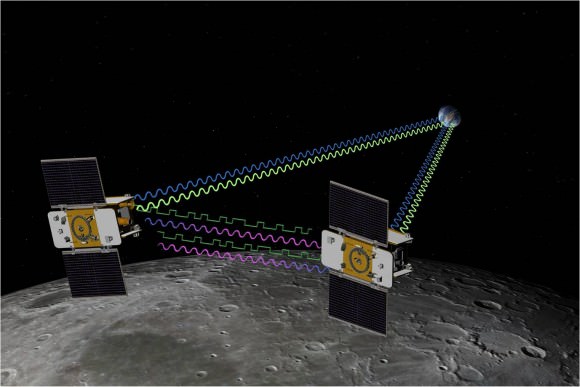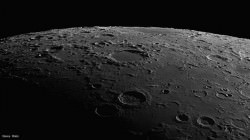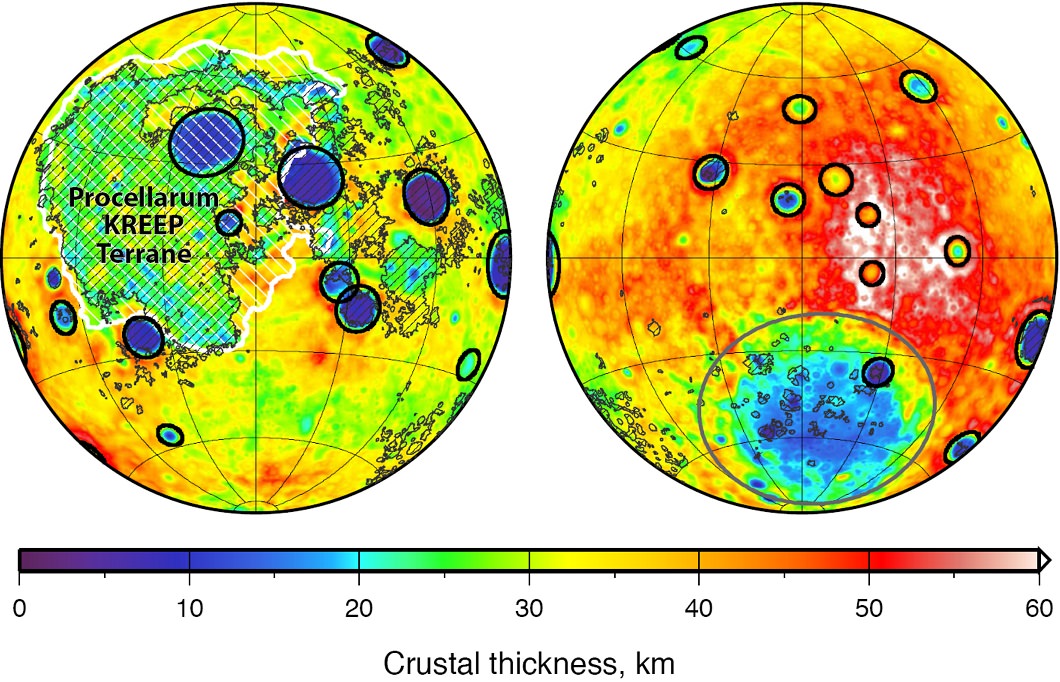The familiar blotches that make up “the man in the moon”, from the vantage point of Earth, happened because the moon’s crust is thinner on the near side than the far side to our planet, new research reveals.
The twin GRAIL spacecraft provided the most accurate sizes yet of lunar impact craters on the moon, providing more insight into what happened when Earth’s closest large neighbor was hammered with meteorites over billions of years.
“Since time immemorial, humanity has looked up and wondered what made the man in the moon,” stated Maria Zuber, GRAIL principal investigator from the Massachusetts Institute of Technology in Cambridge.

“We know the dark splotches are large, lava-filled, impact basins that were created by asteroid impacts about four billion years ago. GRAIL data indicate that both the near side and the far side of the moon were bombarded by similarly large impactors, but they reacted to them much differently.”
The moon’s near side is easily visible in a telescope, but it’s hard to measure the size of the impacts because lava is obscuring their dimensions. The GRAIL spacecraft, however, peered at the internal structure of the moon and also produced information showing how thick the crust is. This showed that there are more, bigger craters on the closer side of the moon to us than the further side.

“Impact simulations indicate that impacts into a hot, thin crust representative of the early moon’s near-side hemisphere would have produced basins with as much as twice the diameter as similar impacts into cooler crust, which is indicative of early conditions on the moon’s far-side hemisphere,” stated lead author Katarina Miljkovic of the Paris Institute of Earth Physics (Institut de Physique du Globe de Paris).
As is common with research projects, learning more about the moon is revealing a new mystery that needs to be examined. It’s commonly cited that the moon was walloped during something called the late heavy bombardment, a period four billion years ago when it was believed that more meteorites impacted the moon.
“The late heavy bombardment is based largely on the ages of large near-side impact basins that are either within, or adjacent to the dark, lava-filled basins, or lunar maria, named Oceanus Procellarum and Mare Imbrium,” NASA stated.
“However, the special composition of the material on and below the surface of the near side implies that the temperatures beneath this region were not representative of the moon as a whole at the time of the late heavy bombardment. The difference in the temperature profiles would have caused scientists to overestimate the magnitude of the basin-forming impact bombardment.”
A research paper on the topic recently appeared in Science. GRAIL successfully concluded its mission last year after nine months of operations, flying into the side of a mountain as planned.
Source: NASA


A free but basic paper (PDF) is available here:
Asymmetric Distribution of Lunar Impact Basins Caused by Variations in Target Properties.
Would like to see an overlay showing mineral composition and relationship(s) to the deep basins. Mining on the Moon anyone? While we’re at it.. .how about a similar map(s) of Mars?
I know this is not the topic of this research, but what caused Moon’s near- and farside asymmetry in the first place?
It may be the result of a slow-velocity impact of a second moon a few tens of millions of years after the formation of the two moons from debris that was ejected when a Mars-size protoplanet smacked into Earth late in its formation period.
Thanks Ivan. I’m looking at the moon right now and imagining how this would look like from here. Nuff said, it must have been spectacular! 🙂 I wonder if such “pancake” collision would be survivable for Earth observer…
Was the moon position facing Earth already locked by the time of the LHB ? I would have thought this would have taken a couple of giga years.